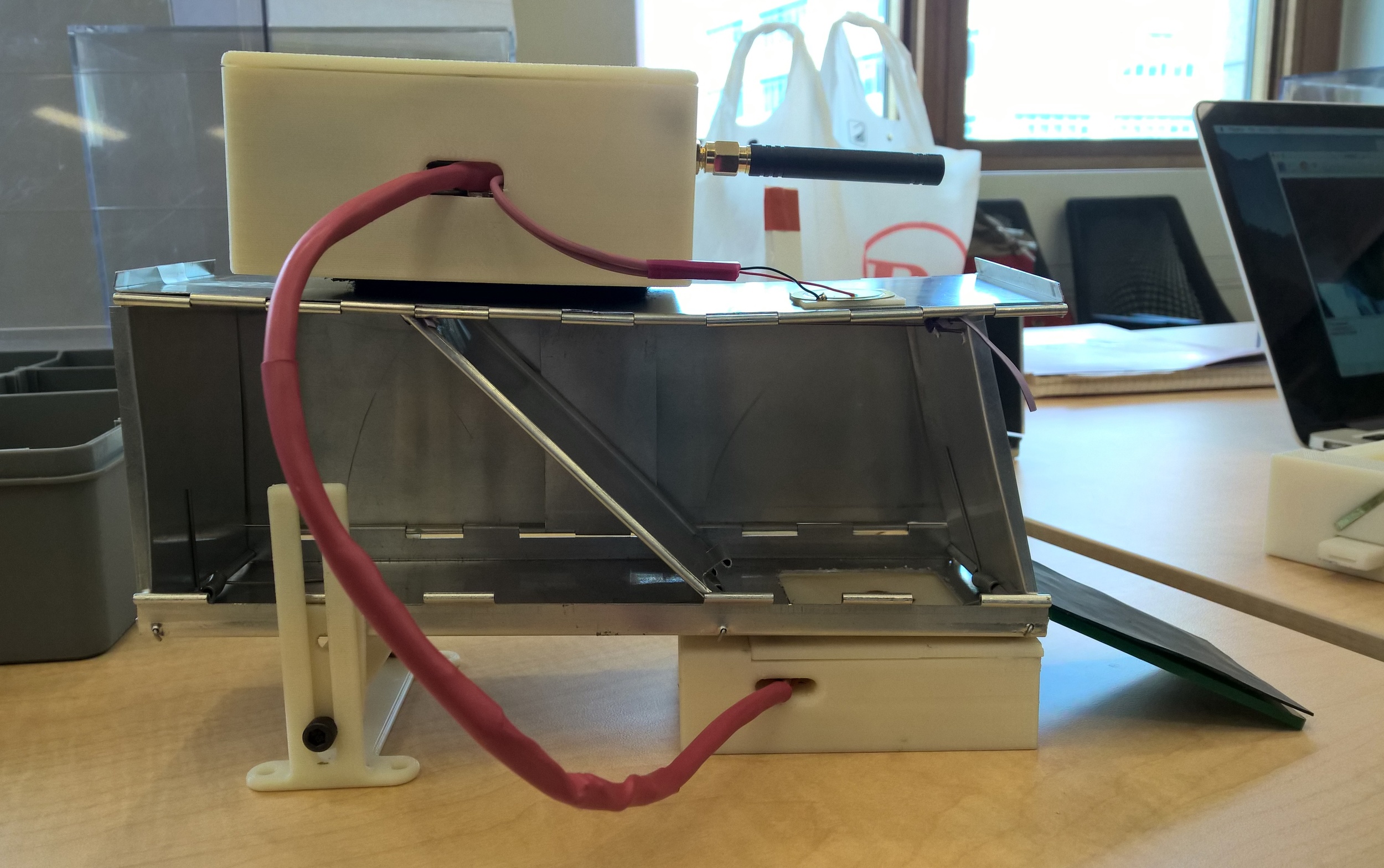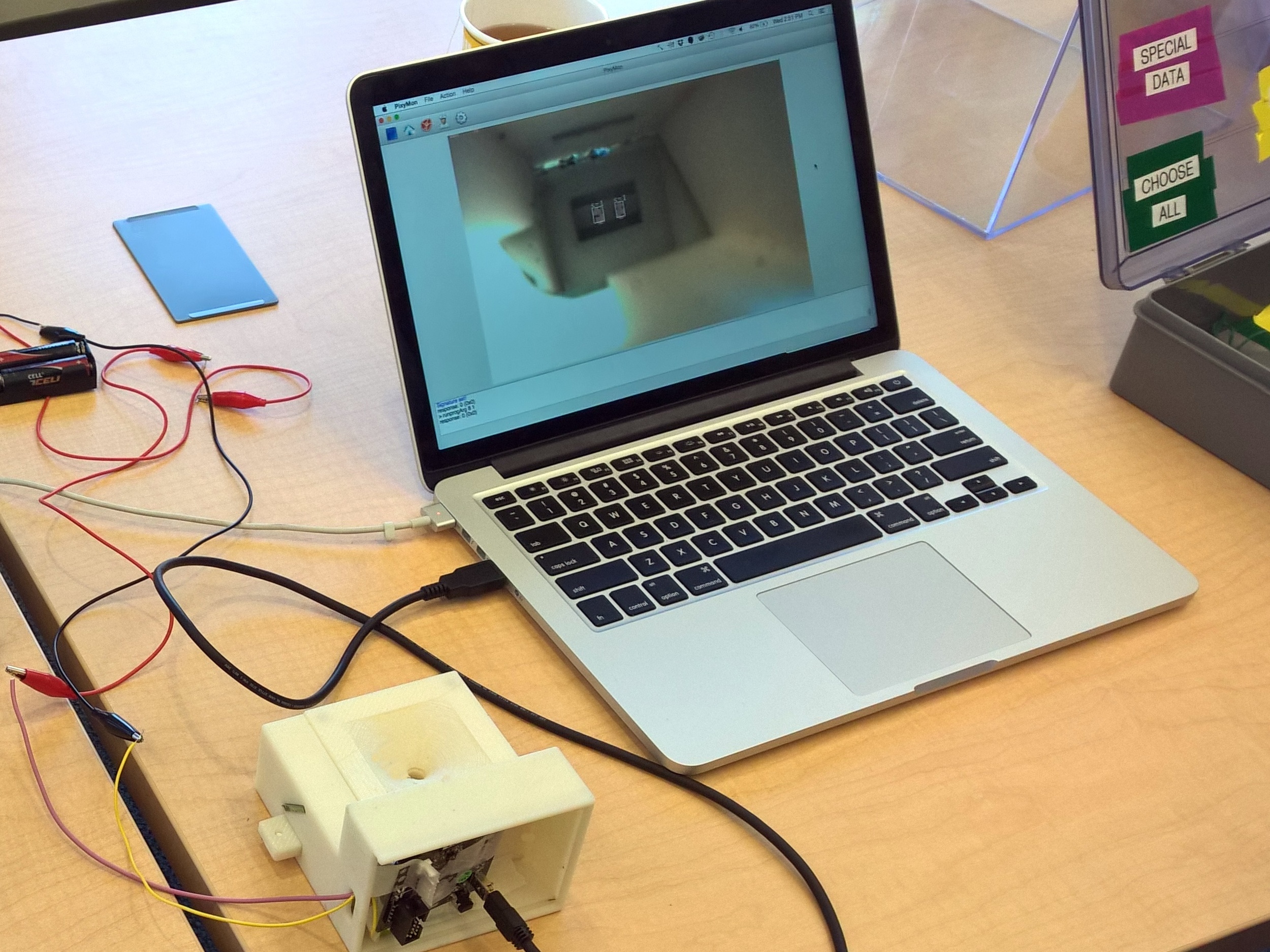Hantavirus is a disease that is carried by rodents and infectious to humans. Found in many warm climates around the world, the virus is most often transmitted to humans through aerosolized urine of said rodents. (This can happen, for example, when the floors of infested barns are swept.) Current techniques for detecting the spread of the virus are laborious and expensive. Mice are caught in metal traps, killed, and taken back to the lab, where PCR is run on blood samples. If one mouse tests positive in a certain area, all the mice within a given radius are exterminated. This process is not only costly, but also puts the scientists testing for the virus at risk of exposure.
Our trap autonomously tests for the virus, using a lateral flow test, while the rodent is still in the trap. It does this through a cutout in the floor of the trap, leading to a coated funnel that directs the rodent's urine onto the lateral flow strip. The strip can then be checked for a positive test via a number of options, ranging from low to high tech. Most simply, the cartridge containing the strip can be removed from underneath the trap and read. On the other end of the spectrum, we utilized a Pixy Arduino camera, LEDs for lighting, an angled mirror, and Arduino GPS and SMS boards to automatically read the result of the test (one vs two dots) and text the result, along with the GPS location of the trap, to the scientist's phone. This could allow scientists to set out an entire grid of traps and generate a heat map of the virus's spread and concentration in various areas.


